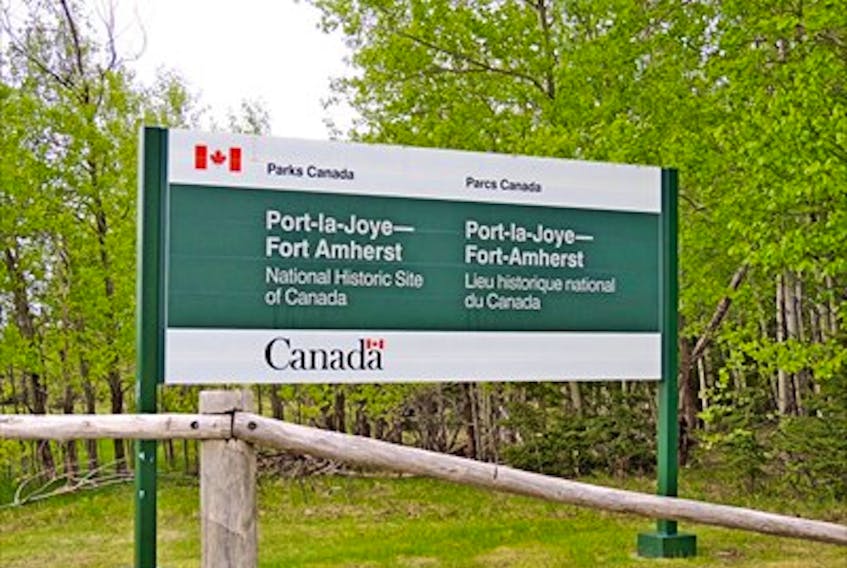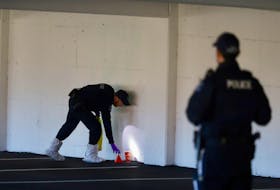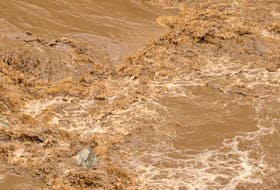A Mi’kmaq elder said merely adding a Mi’kmaq name to an existing national historic site in P.E.I. is an insult to his people, but the chief of the Lennox Island First Nation disagrees.
Keptin John Joe Sark is displeased with the announcement from the federal government Friday that the controversial name of Port-la-Joye-Fort Amherst national historic site will see an additional Mi’kmaq name added to honour the site's Indigenous heritage.
The site will now be Skmaqn—Port-la-Joye—Fort Amherst National Historic Site of Canada.

Sark told The Guardian that adding a name isn’t enough, and that removing Amherst’s name altogether is what the Mi’kmaq people want.
“It would be an insult to add a Mi’kmaq name to sit along that genocidal tyrant, Gen. Amherst.”
Related: Fort Amherst name a “subtle” form of white supremacy, says rally organizer
Skmaqn was the historic name proposed by the Mi’kmaq Confederacy of P.E.I. in the fall of 2017 after extensive consultation within the Mi’kmaq community by the Mi’kmaq leadership.
Lennox Island First Nation Chief Mathilda Ramjattan, who was involved with the consultation process and the renaming of the site, said she’s pleased with the additional name, saying it’s important to remember the past.
“If we lose our history, then I think that we would be at risk of repeating it. I’m all about hanging on to the good, the bad and the ugly of history.”
There’s still a lot to be done for people to know about the Island’s history, but Ramjattan said this is a good first step.
“It might be a small piece, but it does cause people to ask questions, and that’s what we want - people to ask questions,” she said. “We are part of history. We’ve been here for well over 10,000 years.”

In a press release, Abegweit First Nation Chief Brian Francis said the historic site is an important one for Mi’kmaq history and for the Mi’kmaq community.
“We are pleased that the name will now better reflect the complex history of the site, including its Indigenous history.”
Skmaqn (pronounced Ska-MAA-kin) means “the waiting place” and is thought to have its origins in the years 1725-1758 when Mi’kmaq and French leaders met annually at the site to renew their relationship and military alliance. As French leaders were often delayed in arriving from Cape Breton for the ceremonies, the Mi’kmaq of Epekwitk would wait for them to arrive.
Last year, Sark, a member of the Mi'kmaq Nation traditional government, mounted a personal campaign to urge that the name of General Jeffery Amherst be scrubbed from Port-la-Joye-Fort Amherst historic site.
Related: Mi'kmaq keptin returns Order of P.E.I. over Fort Amherst, other indigenous issues
The British military officer advocated for the eradication of indigenous populations and tried to murder local aboriginal people with smallpox blankets.
Sark handed in his Order of P.E.I. in protest of the province failing to push Parks Canada to remove the name of the military officer who wanted to kill aboriginal people with smallpox.
But P.E.I.’s current Mi’kmaq chiefs say they are satisfied with Parks Canada adding a Mi’kmaq name to the site.
“The difficult and painful elements of Canadian history, such as those associated with Skmaqn, have a lot to teach us today. We need, as a country, to learn from our past, and in order to learn from it, we need to understand it, including the hardships endured by my ancestors as a result of colonization”, said Lennox Island First Nation Chief Matilda Ramjattan.
The Mi’kmaq Confederacy says looks forward to working with the Historic Sites and Monuments Board of Canada, Parks Canada and other cultural groups with ties to the site to improve the presentation of the history, including the Indigenous history, at the site.
The Guardian was unable to reach the Historic Sites and Monuments Board of Canada - the body responsible for the name change - for comment before publication.









